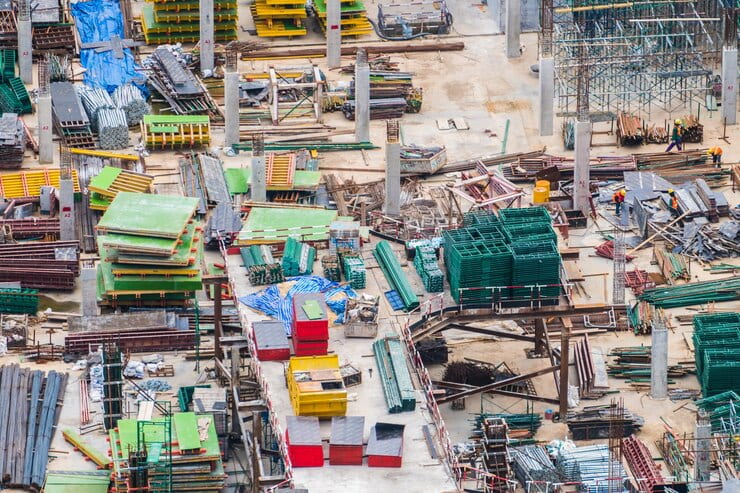In the fast-paced world of construction and infrastructure development, structural steel remains a cornerstone material due to its strength, durability, and flexibility. As the Middle East continues to grow, the UAE stands tall as a hub for innovation and excellence in construction materials. Among the key players driving this growth are structural steel suppliers in the UAE—who have carved out a reputation for quality, reliability, and innovation. But what truly sets them apart from their global counterparts?
Let’s explore the unique qualities that make UAE structural steel suppliers stand out in the international market.
1. Strategic Location and World-Class Infrastructure
The UAE’s geographical location at the crossroads of Europe, Asia, and Africa offers unmatched logistics advantages. This strategic positioning allows UAE-based steel suppliers to efficiently serve global markets across continents. Ports like Jebel Ali and Khalifa Port are among the busiest and most advanced in the world, enabling seamless import and export of steel products.
Coupled with a state-of-the-art logistics network, including roads, airports, and free zones, structural steel suppliers in the UAE enjoy smoother operations and quicker turnaround times, ensuring projects stay on schedule regardless of location.
2. Commitment to Quality and Global Standards
UAE structural steel suppliers adhere to stringent international standards such as ASTM, BS, DIN, and EN. Most leading suppliers are ISO-certified, ensuring that their manufacturing processes, quality control systems, and product performance are consistently high.
Many suppliers also work closely with consultants and engineers to provide custom solutions for unique projects—whether for high-rise towers, industrial plants, bridges, or stadiums. The quality and reliability of UAE steel make it a preferred choice for both local and international projects.
3. Advanced Manufacturing and Technology Integration
Steel suppliers in the UAE embrace innovation through automation, AI-driven production systems, and cutting-edge machinery. This not only boosts production capacity but also ensures precision in fabrication and processing.
Technological integration also allows for:
- Computer-aided design (CAD) and detailing
- Automated cutting, drilling, and welding
- Efficient inventory and supply chain management
Such capabilities empower UAE suppliers to meet complex architectural requirements and tight deadlines with ease.
4. Focus on Sustainability and Green Practices
Sustainability is becoming a non-negotiable aspect of modern construction—and UAE steel suppliers are ahead of the curve. Many implement eco-friendly practices such as
- Using recycled materials in steel production
- Reducing energy consumption in manufacturing
- Employing water-saving technologies
- Offering LEED-compliant steel products
Additionally, the UAE government encourages green building initiatives and awards certifications for sustainable construction. Local suppliers align with these initiatives, helping contractors achieve their environmental goals.
5. Robust Product Range and Customization Options
Another distinguishing factor is the extensive product range offered by UAE steel suppliers. From universal beams and columns to angles, channels, plates, hollow sections, and rebar, they provide a full spectrum of structural steel solutions.
Moreover, suppliers offer value-added services such as
- Galvanizing and painting
- CNC machining
- Plasma and laser cutting
- Bending and shaping
This one-stop-shop approach saves time and enhances project efficiency for contractors and developers.
6. Reliability and On-Time Delivery
In construction, time is money—and UAE suppliers understand that well. Their reliable logistics infrastructure, advanced project management, and real-time tracking ensure that materials reach the site promptly.
Many suppliers offer
- Real-time tracking of shipments
- Quick turnaround for large orders
- Stock availability for urgent requirements
Whether it’s a mega infrastructure project or a residential development, this level of dependability builds long-term trust with clients.
7. Strong Regulatory and Business Environment
The UAE government has created a business-friendly ecosystem that supports industrial growth and innovation. Free zones such as JAFZA (Jebel Ali Free Zone), DAFZA (Dubai Airport Free Zone), and KIZAD (Khalifa Industrial Zone) offer benefits like:
- 100% foreign ownership
- Tax exemptions
- Easy import/export regulations
- Access to skilled labor
This favorable environment empowers steel suppliers to operate efficiently and competitively while maintaining international business standards.
8. Experienced Workforce and Engineering Expertise
Behind every steel structure is a team of skilled professionals. UAE-based suppliers boast experienced engineers, technicians, and project managers who bring global knowledge and local insights to the table.
Their deep understanding of the regional market, building codes, and environmental factors enables them to offer tailored solutions for projects of every scale. Whether it’s desert heat, coastal humidity, or seismic activity, they ensure the steel used is perfectly suited for its environment.
9. Global Reputation and Prestigious Projects
UAE structural steel suppliers have made their mark not only locally but also on the global stage. Their steel is used in projects across the GCC, Africa, Europe, and Asia.
Some of the prestigious projects that showcase UAE-supplied steel include:
- Burj Khalifa (Dubai)
- Louvre Abu Dhabi
- Dubai Metro
- Expo 2020 Dubai Pavilions
- Infrastructure projects in Saudi Arabia and Africa
These landmark developments stand as a testament to the quality and trustworthiness of UAE suppliers.
10. Excellent Customer Service and After-Sales Support
Finally, one of the most appreciated aspects of UAE steel suppliers is their dedication to customer service. From the initial inquiry to after-sales support, they ensure a smooth and responsive communication process.
Many suppliers offer
- Technical consultations
- Installation guidance
- On-site inspections
- Quick resolution of issues or concerns
This level of service builds strong client relationships and encourages repeat business.
Conclusion
Structural steel suppliers in UAE have truly set a global benchmark through their unwavering focus on quality, innovation, customer satisfaction, and sustainability. Their ability to adapt to changing market demands, leverage cutting-edge technologies, and deliver tailored solutions makes them an ideal partner for construction projects both locally and internationally.
Whether you’re a contractor, architect, or developer, choosing a UAE-based steel supplier means choosing efficiency, reliability, and excellence. It’s not just about buying steel—it’s about building success from the ground up.


